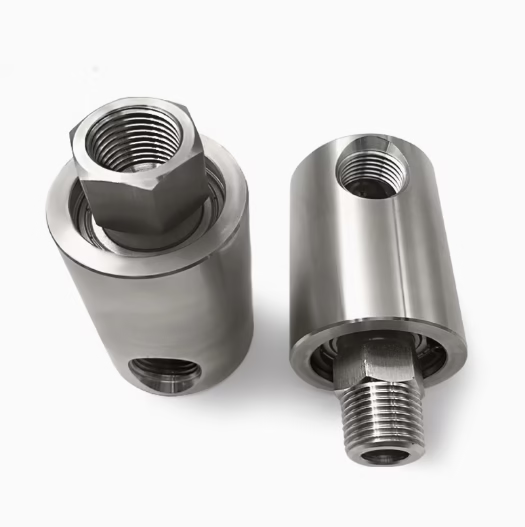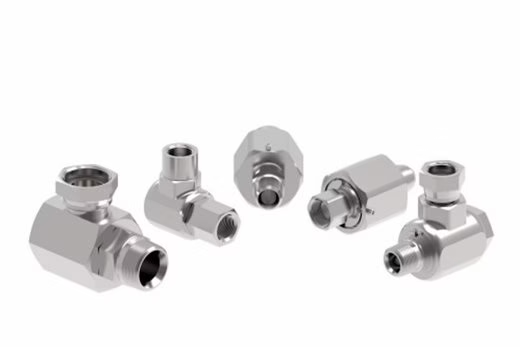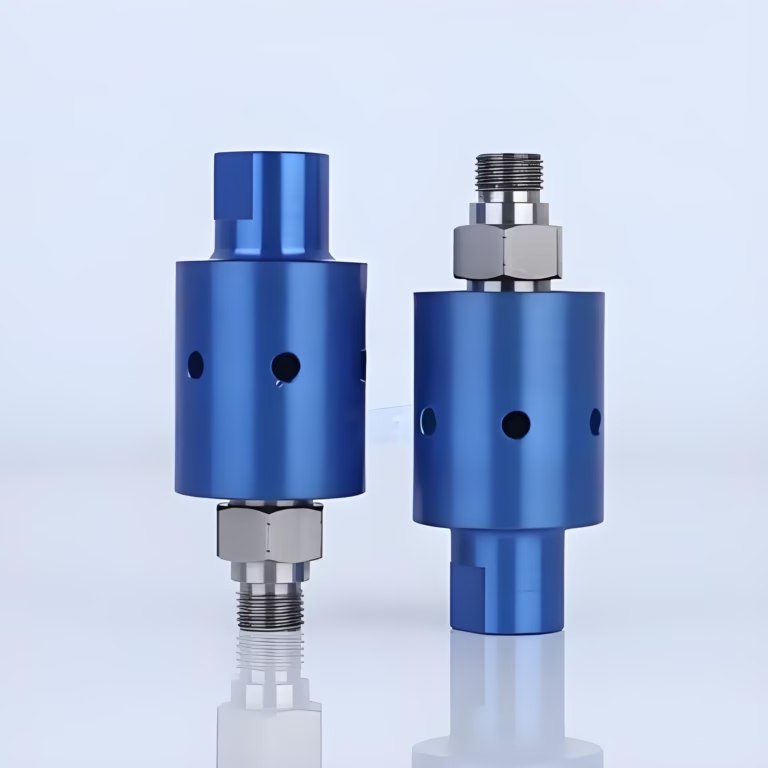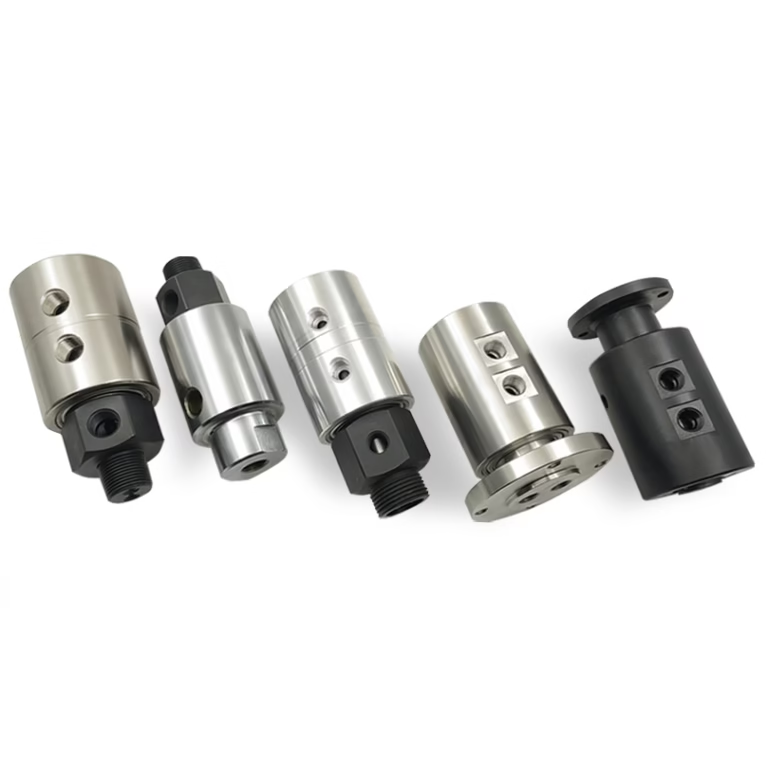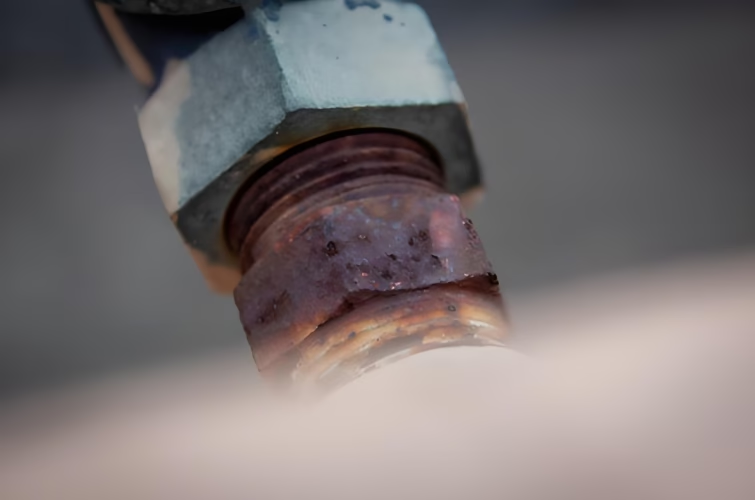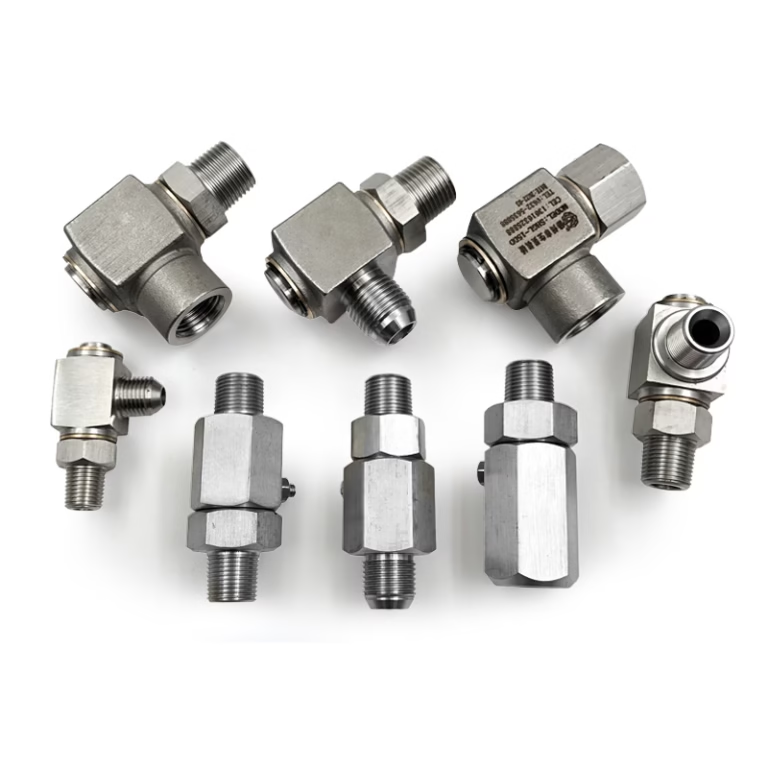Heavy Equipment Rotary Union for Hydraulics
Introduction
In the demanding world of heavy-duty industries, where equipment operates under extreme conditions and heavy loads, the role of a heavy equipment rotary union for hydraulics often goes unnoticed but is critical. I’ve observed a rising trend in searches related to “Heavy Equipment Rotary Union for Hydraulics,” indicating a growing need for in-depth knowledge about this essential component. In this blog, we’ll embark on a comprehensive exploration of heavy equipment hydraulic rotary unions, covering their design, working principles, applications, selection criteria, maintenance, and more.
What is a Heavy Equipment Rotary Union for Hydraulics?
A heavy equipment rotary union for hydraulics is a specialized mechanical device that enables the transfer of hydraulic fluid between a stationary part and a rotating part of heavy machinery. In hydraulic systems, fluid pressure powers various functions such as lifting, pushing, and rotating. Rotary unions play a vital role in maintaining a continuous and leak-proof flow of hydraulic fluid, even as components of the equipment rotate at high speeds or move through complex motions.
These unions are engineered to withstand harsh operating conditions, including high pressures, extreme temperatures, and exposure to dust, dirt, and moisture. They are used in a wide range of heavy equipment, from construction machinery like excavators and cranes to mining equipment, agricultural machinery, and industrial vehicles. Without a reliable hydraulic rotary union, the hydraulic systems in these machines would fail, leading to costly downtime and reduced productivity.
Key Components of a Heavy Equipment Hydraulic Rotary Union
To understand how a heavy equipment hydraulic rotary union functions, it’s essential to familiarize ourselves with its key components. Each part contributes to the union’s ability to handle high-pressure hydraulic fluid and maintain smooth rotation.
Housing
The housing is the outer shell of the rotary union, providing structural support and protection for the internal components. Manufacturers typically construct it from robust materials such as stainless steel, carbon steel, or high-strength alloys. These materials offer excellent durability, corrosion resistance, and the ability to withstand the mechanical stresses associated with heavy-duty operations. The housing also features inlet and outlet ports, which connect to the stationary hydraulic lines and the rotating parts of the equipment, respectively.
Rotating Shaft
The rotating shaft is a central component of the rotary union. It connects to the rotating part of the heavy equipment, such as a boom, a turntable, or a wheel hub, and rotates along with it. The shaft must be strong enough to handle the mechanical loads imposed by the rotating equipment while allowing hydraulic fluid to flow through its internal passages. To enhance its strength and wear resistance, engineers often subject the shaft to processes like heat treatment or surface hardening. Additionally, the shaft may have precision-machined surfaces to ensure a proper fit with other components and minimize friction.
Sealing Elements
Sealing elements are crucial for preventing hydraulic fluid leakage and keeping contaminants out. Heavy equipment hydraulic rotary unions commonly use a combination of seals, including mechanical seals, O-rings, and lip seals.
Mechanical Seals:
These are among the most important sealing components. Mechanical seals consist of two mating surfaces, one fixed to the housing and the other attached to the rotating shaft. A thin film of hydraulic fluid between the surfaces acts as a lubricant, reducing friction and preventing direct contact, which could lead to wear and leakage. Mechanical seals are designed to handle high pressures and speeds, making them suitable for the demanding conditions of heavy equipment.
O-rings:
O-rings are simple yet effective seals. Made from elastomeric materials like rubber or fluorocarbon, they create a tight seal by deforming slightly when compressed between two surfaces. O – rings are often used in areas where static sealing is required, such as between the housing and other components, to prevent fluid from leaking out of the union.
Lip Seals:
Lip seals, also known as radial shaft seals, have a flexible lip that presses against the rotating shaft. This lip creates a seal that prevents the ingress of dust, dirt, and moisture while also retaining the hydraulic fluid. Lip seals are particularly useful in protecting the internal components of the rotary union from external contaminants.
Bearings
Bearings support the rotating shaft, allowing it to spin smoothly with minimal friction. In heavy equipment hydraulic rotary unions, with different types of bearings, depending on the application requirements. Ball bearings are popular due to their high load-carrying capacity and low friction characteristics, making them suitable for high-speed applications. Roller bearings, on the other hand, can handle heavier loads and are often in situations where both radial and axial loads are significant. Properly functioning bearings are essential for the longevity and efficient operation of the rotary union.
Fluid Passages
The internal fluid passages within the rotary union ensure the smooth flow of hydraulic fluid. These passages can be single or multi-channel, depending on the number of fluids the union needs to handle. In multi-channel rotary unions, each fluid has its dedicated passage to prevent cross-contamination. The design of the fluid passages takes into account factors such as fluid pressure, flow rate, and turbulence to minimize pressure drops and ensure efficient fluid transfer.
How Does a Heavy Equipment Hydraulic Rotary Union Work?
Assembly and Initial Setup
When assembling a heavy equipment hydraulic rotary union, technicians follow a precise process. First, they carefully clean all the components to remove any dirt, debris, or manufacturing residues. Then, they install the bearings onto the rotating shaft, ensuring proper alignment and lubrication. Next, the sealing elements are placed in their designated positions, with mechanical seals being installed with great care to ensure the correct mating of the surfaces. Finally, the housing is attached, and the inlet and outlet ports are connected to the appropriate hydraulic lines.
Fluid Inlet and Pressure Build-up
Once the rotary union install in the heavy equipment, hydraulic fluid enters the union through the inlet port. As the fluid flows into the housing, it creates pressure within the internal fluid passages. This pressure forces the fluid to move towards the rotating shaft and out through the outlet port, which connects to the rotating part of the equipment. The pressure of the hydraulic fluid is crucial for powering the various hydraulic functions of the equipment, such as operating cylinders or motors.
Rotation and Sealing
As the heavy equipment operates and the relevant components rotate, the rotating shaft of the rotary union spins along with them. The sealing elements play a critical role during rotation. Mechanical seals maintain a tight seal between the stationary housing and the rotating shaft by keeping the mating surfaces in contact, with the fluid film between them providing lubrication. O-rings and lip seals prevent leakage from other areas of the union and protect the internal components from external contaminants. This coordinated action of the sealing elements ensures that the hydraulic fluid remains within the designated pathways and that the union can operate continuously without leakage.
Fluid Transfer and Outlet
The hydraulic fluid, under pressure, moves through the internal fluid passages of the rotary union and reaches the outlet port. From there, it is transferred to the rotating part of the heavy equipment, where it powers hydraulic actuators, motors, or other components. The efficient transfer of fluid is essential for the proper functioning of the equipment. For example, in an excavator, the hydraulic fluid transferred through the rotary union powers the cylinders that move the boom, arm, and bucket, enabling digging, lifting, and loading operations.
Applications of Heavy Equipment Hydraulic Rotary Unions
Construction Industry
In the construction industry, heavy equipment hydraulic rotary unions are used in a variety of machinery.
Excavators:
Excavators rely on hydraulic rotary unions to transfer fluid to the rotating upper structure. This allows the operator to rotate the cab and control the movement of the boom, arm, and bucket. The rotary union ensures that the hydraulic system can operate smoothly, even as the excavator performs complex digging and lifting tasks.
Cranes:
Cranes use hydraulic rotary unions in their slewing mechanisms. The union enables the continuous supply of hydraulic fluid to the crane’s rotating parts, such as the jib and the hoist system. This is crucial for lifting and moving heavy loads with precision and stability.
Bulldozers and Loaders:
These machines also incorporate hydraulic rotary unions to power their hydraulic systems, which control functions like blade movement and bucket operation. The unions allow for seamless operation of the equipment, even in rough and demanding construction environments.
Mining Industry
The mining industry places high demands on heavy equipment, and hydraulic rotary unions play a vital role in ensuring reliable operation.
Mining Trucks:
Large-scale mining trucks use hydraulic rotary unions to transfer fluid to their steering systems, braking systems, and dump mechanisms. These unions must be able to withstand the harsh conditions of mining sites, including extreme temperatures, dust, and vibration.
Excavators and Loaders in Mines:
Similar to those in the construction industry, mining excavators and loaders rely on hydraulic rotary unions to operate their hydraulic components. The unions enable these machines to handle heavy loads of ore and other materials, facilitating the extraction and transportation processes in mines.
Agricultural Industry
In agriculture, heavy equipment hydraulic rotary unions are essential for various machinery.
Tractors:
Tractors use hydraulic rotary unions to power attachments such as plows, harvesters, and sprayers. The unions ensure that the hydraulic fluid can flow smoothly to these attachments, allowing farmers to perform tasks like tilling the soil, harvesting crops, and applying pesticides or fertilizers efficiently.
Combine Harvesters:
Combine harvesters have multiple rotating components that require a continuous supply of hydraulic fluid. Hydraulic rotary unions enable the transfer of fluid to these components, ensuring the smooth operation of the harvester and maximizing crop yields.
Industrial Applications
In industrial settings, heavy equipment hydraulic rotary unions are used in a wide range of machinery, including manufacturing equipment, material handling systems, and industrial vehicles.
Industrial Cranes and Hoists:
These machines rely on hydraulic rotary unions to lift and move heavy industrial components and materials. The unions ensure the reliable operation of the hydraulic systems, which are crucial for maintaining productivity in industrial plants.
Conveyor Systems:
Some conveyor systems in industrial facilities use hydraulic power, and hydraulic rotary unions are employed to transfer fluid to the rotating parts of the conveyors. This allows for the efficient movement of materials along the production line.
Selecting the Right Heavy Equipment Hydraulic Rotary Union
Consider the Operating Conditions
Pressure Rating:
The hydraulic rotary union must be able to handle the maximum pressure of the hydraulic system in the heavy equipment. Exceeding the pressure rating can lead to seal failure, leakage, and damage to the union. It’s important to select a union with a pressure rating that is higher than the expected operating pressure of the system.
Temperature Range:
Heavy equipment often operates in a wide range of temperatures, from extremely cold to very hot environments. The rotary union should be designed to withstand the temperature extremes of the operating environment. Some unions are made from materials that can maintain their integrity and performance over a broad temperature range, while others may require additional insulation or cooling measures.
Environmental Factors:
The presence of dust, dirt, moisture, and corrosive substances in the operating environment can affect the performance and lifespan of the rotary union. In dusty or dirty environments, unions with effective sealing elements to prevent the ingress of contaminants are essential. In corrosive environments, unions made from corrosion-resistant materials should be chosen.
Fluid Compatibility
The hydraulic fluid used in the system must be compatible with the materials of the rotary union. Different fluids have different chemical properties, and using a fluid that is not compatible with the union’s materials can cause degradation, swelling, or cracking of the seals and other components. Always check the manufacturer’s recommendations regarding fluid compatibility before selecting a rotary union.
Rotation Speed and Load Requirements
Rotation Speed:
The speed at which the rotating shaft of the union will operate is an important consideration. High-speed applications require unions with bearings and seals that can withstand the increased centrifugal forces and friction. Some rotary unions are specifically designed for high-speed operation, featuring advanced sealing technologies and precision-engineered bearings.
Load Requirements:
Heavy equipment often subjects the rotary union to significant mechanical loads, including radial and axial forces. The union should be able to handle these loads without excessive wear or damage. Consider the maximum load that the union will encounter during operation and choose a model with the appropriate load-carrying capacity.
Size and Mounting Configuration
The size of the rotary union must be compatible with the available space in the heavy equipment. Additionally, the mounting configuration of the union should match the equipment’s design. Ensure that the union can be easily installed and integrated into the hydraulic system without requiring major modifications to the equipment.
Brand Reputation and After-Sales Support
Choose a rotary union from a reputable manufacturer with a proven track record in the industry. A well-known brand is more likely to provide high-quality products that meet industry standards. Additionally, good after-sales support, including technical assistance, spare parts availability, and warranty coverage, is essential for ensuring the long-term performance and reliability of the union.
Maintenance of Heavy Equipment Hydraulic Rotary Unions
Regular Inspection
Regularly inspect the hydraulic rotary union for any signs of leakage, wear, or damage. Look for fluid stains or drips around the union, which may indicate a seal failure. Check the sealing elements, especially the mechanical seals, for cracks, tears, or signs of wear. Inspect the housing and the rotating shaft for any visible damage, such as scratches or corrosion. Early detection of issues can prevent more significant problems from occurring and reduce downtime.
Lubrication
Proper lubrication of the bearings and other moving parts of the rotary union is essential for smooth operation and to reduce friction and wear. Follow the manufacturer’s recommendations regarding the type of lubricant to use, the frequency of lubrication, and the application method. Over-lubrication can attract dirt and contaminants, while under-lubrication can lead to increased wear and premature failure of the components.
Seal Replacement
Seals are the most vulnerable components of a hydraulic rotary union and will wear out over time. Follow the manufacturer’s recommended replacement intervals for the seals. Even if there are no visible signs of damage, it’s a good practice to replace the seals at regular intervals to maintain optimal sealing performance. When replacing the seals, ensure that they are installed correctly and that the mating surfaces are clean and free from any contaminants.
Cleaning
Keep the area around the rotary union clean to prevent the accumulation of dirt, dust, and debris. Regularly clean the exterior of the union using a suitable cleaning agent and a soft cloth. Avoid using abrasive materials that could damage the surface of the union. Cleaning the union helps to prevent contaminants from entering the internal components and causing damage.
Monitoring Performance
Monitor the performance of the hydraulic system in which the rotary union is installed. Pay attention to parameters such as fluid pressure, flow rate, and temperature. Any significant changes in these parameters may indicate a problem with the rotary union or the hydraulic system. By regularly monitoring the performance, you can detect issues early and take appropriate corrective actions.
Conclusion
Heavy equipment rotary unions for hydraulics are indispensable components in heavy-duty industries, enabling the efficient transfer of hydraulic fluid and the smooth operation of complex machinery. Understanding their design, working principles, applications, selection criteria, and maintenance requirements is crucial for ensuring the reliability and productivity of heavy equipment.


